As the new member in the IS sedan family, the IS200t is equipped with the same 8AR-FTS turbocharged 2.0L 4-cylinder engine as in the NX200t. But power output is slightly bumped to be 241 hp and torque is remained the same: 258 lb-ft. Lexus said the IS200t will also borrow the 8-speed automatic transmission from the RC-F.
– 2.0L 4-cylinder engine with twin-scroll turbochargers: 241hp @ 5,800 RPM, 258 lb-ft @ 1,650-4,400 RPM
– 0-100 km/h in 7.0 seconds
– Top speed: 143 mph
Brussels, Belgium – Lexus is expanding the range of vehicle equipped with its new 2.0-litre turbo engine. Following the launch of NX 200t in early 2015 and the announced arrival of RX 200t by the end of the year, IS is the third Lexus model to be fitted with this new engine.Powered by a new 2.0-litre petrol turbo engine – with innovative D-4ST fuel injection technology for both fuel economy and instantaneous torque – the Lexus IS 200t sports sedan delivers 245 DIN hp (180kW) with a maximum torque of 350 Nm. Capable of rapid acceleration up to a top speed of 230 km/h, its 8-speed Sport Direct Shift transmission was developed for the high-performance RC F.
Featuring a breakthrough combination of water-cooled cylinder head, integrated exhaust manifold and twin scroll turbocharger, this all-new Lexus 2.0-litre turbo engine delivers fast throttle response, performance and high torque at low engine revs. For enhanced fuel economy, innovative valve timing (VVT-iW: Variable Valve Timing intelligent – Wide) allows the engine to switch between the Otto and Atkinson cycles.
The IS 200t returns a 0-100 km/h acceleration time of 7.0 seconds and an average fuel consumption of 7.0l/100 km.
Cylinder Head with Integral 4-into-2 Exhaust Manifold and Twin-Scroll Turbo
This innovative, combination of engine technologies has been designed to provide a high level of responsiveness with minimal turbo lag and enhanced low speed torque, and yet return an improved fuel economy.
The four-into-two exhaust manifold system pairs cylinders according to their expansion or compression stroke. Acting in conjunction with the highly-efficient, twin-scroll turbocharger, this innovative manifold structure prevents interference between the exhaust gasses from each cylinder, generating high torque across the widest possible rev range.
The engine further employs an air to liquid intercooler mounted directly to the engine to significantly reduce the intake volume downstream of the turbocharger, minimising turbo lag for a highly responsive performance.
The twin-scroll turbocharger itself features variable waste gate valve control. This minimises pumping losses by reducing back pressure during low engine loads when the turbo is not required realising good fuel economy.
In addition, the integration of the exhaust manifold within the cylinder head enhances exhaust gas cooling without sacrificing catalyst warm-up performance. This not only helps to suppress catalyst deterioration, but also expands driving range at the optimum, stoichiometric air-fuel ratio.
D-4ST Fuel Injection System
D-4ST (Direct injection 4 stroke gasoline engine Superior version with Turbo) combines a high pressure fuel system for injection directly into the cylinders with a low pressure system for injection into the ports. Injection is split between the direct and port injectors according to the engine load, optimising fuel combustion in all driving situations to enhance both low speed torque and fuel economy.
This advanced fuel injection system works in combination with turbocharging technology to create a high level of compatibility between the ‘high tumble ratio’ achieved by optimising the shape of the cylinder head intake ports and the piston tops, and turbo ‘boost control’.
Innovative Dual VVT-iW Technology
Optimising torque throughout the engine rev range and allowing the engine to start in the Otto cycle and yet run in the more fuel efficient Atkinson cycle, the new Lexus turbo features innovative dual variable valve timing technology which adopts VVT-i to the exhaust valves and VVT-iW to the intake valves, but also delivers wide open throttle performance.
The late intake valve closing of the Atkinson cycle reduces pumping losses and boosts fuel economy. VVT-iW incorporates a mid-position lock which not only enables the Atkinson cycle to be maintained without sacrificing starting performance in cold weather.
Further Advanced Features
The new 2.0 litre turbo engine is remarkably light and compact. Cast with low nickel content heat resistant steel, and featuring a resin cylinder head cover, intake manifold and intake pipes, it weighs just 160 kg. The unit was bench-tested for more than 10,000 hours before extensive on-road testing began, during which it then covering more than one million kilometres.
Several measures have been adopted to reduce friction losses within various parts of the engine, enhancing fuel economy. The adoption of an offset crankshaft lowers the piston thrust load to reduce friction losses. Cylinder bore machining has been improved and a piston surface treatment applied to the piston skirts, reducing sliding resistance. Low tension piston rings have been used, and the weight of reciprocating parts reduced.
A lightweight roller rocker valve train and a low friction timing chain have been adopted, and the sliding parts of the chain fabricated in a low friction material. Low friction materials have also been used for the crankshaft oil seals, and the flow of lubricating oil optimised, with oil pump flow reduced through the adoption of a variable discharge mechanism.
Careful heat management within the engine further improves fuel efficiency. To that end, a cylinder block rapid warm-up system suppresses the flow of coolant into the block when the engine is cold, and a piston cooling oil jet control system cuts the supply of oil to the pistons to improve warm-up speeds.
Smoothness, Quietness and a Better Turbo Sound
With the rigidity of the main structural components already optimised to suppress vibration, the new engine is further equipped with a balance shaft featuring resin gears for even greater smoothness.
Newly developed lubricating calcium free oil removes the chance of engine knock at low engine revolutions, and the piston cooling oil jet system further improves anti-knock performance.
The water-cooled intercooler provides strong advantages in starting off acceleration and a 0.3-second reduction in 0–100km/h acceleration time over an air-to-air type alternative. The acceleration curve prioritises torque delivery at low speeds.
Turbo engines tend to be noisy when the throttle is closed (referred to as the ‘turbo sigh’). An electric air bypass valve and resonator have been adopted to greatly reduce characteristic turbocharger noise. As a turbocharged engine requires smooth intake flow for performance, Lexus engineers focused on creating special duct shapes which deliver power without noise.
Eight-speed transmission with paddle shifts
The IS 200t also received the 8-Speed Sport Direct Shift transmission with paddle shifts, originally developed for the RC F high-performance coupe. The rear wheel drive IS 200t is the first Lexus sedan to vary gear shifting in accordance to G-forces.
The transmission automatically downshifts during hard braking before a corner then holds a lower gear through the corner for best control and then selects the most suitable gear on corner exit to give the driver greater throttle response.
The IS 200t will be available as from September 2015.
IS 200t – TECHNICAL DATA
ENGINE
Maximum Output DIN hp / kW 245 / 180
Capacity (cm) / Cylinders / Valves 1998 / L4 / 16
Valve mechanism Dual VVT-i
Fuel type / Octane rating Petrol / 95 or +
Max. power (DIN hp / kW @ rpm) 245 / 180 @ 5800
Max. torque (Nm @ rpm) 350 @ 1650-4400
TRANSMISSION
Driven wheels Rear-wheel drive
Transmission 8-speed Sport Direct Shift automatic
PERFORMANCE
Max. speed (km/h) 230
0-100 km/h (s) 7.0
EMISSIONS* (g/km)
Emissions level Euro 6
CO2Combined 162 (with 17”wheels) / 167 (with 18”wheels)
FUEL CONSUMPTION* (l/100 km)
Combined 7.0 (with 17”wheels) / 7.2 (with 18”wheels)
BRAKES
Front and rear Ventilated discs
SUSPENSION
Front Double wishbone
Rear Multi-link
STEERING
Type Rack and pinion
Turns (lock to lock) 2.84
Min. turning radius (m) 5.2
WEIGHTS (kg)
Gross vehicle 2125
Kerb (min. – max.) 1590-1680
Towing (max. with / without brakes) 1500 / 750
DRAG COEFFICIENT
Cd value 0.28
CAPACITIES (l)
Fuel tank 66
Luggage compartment 480


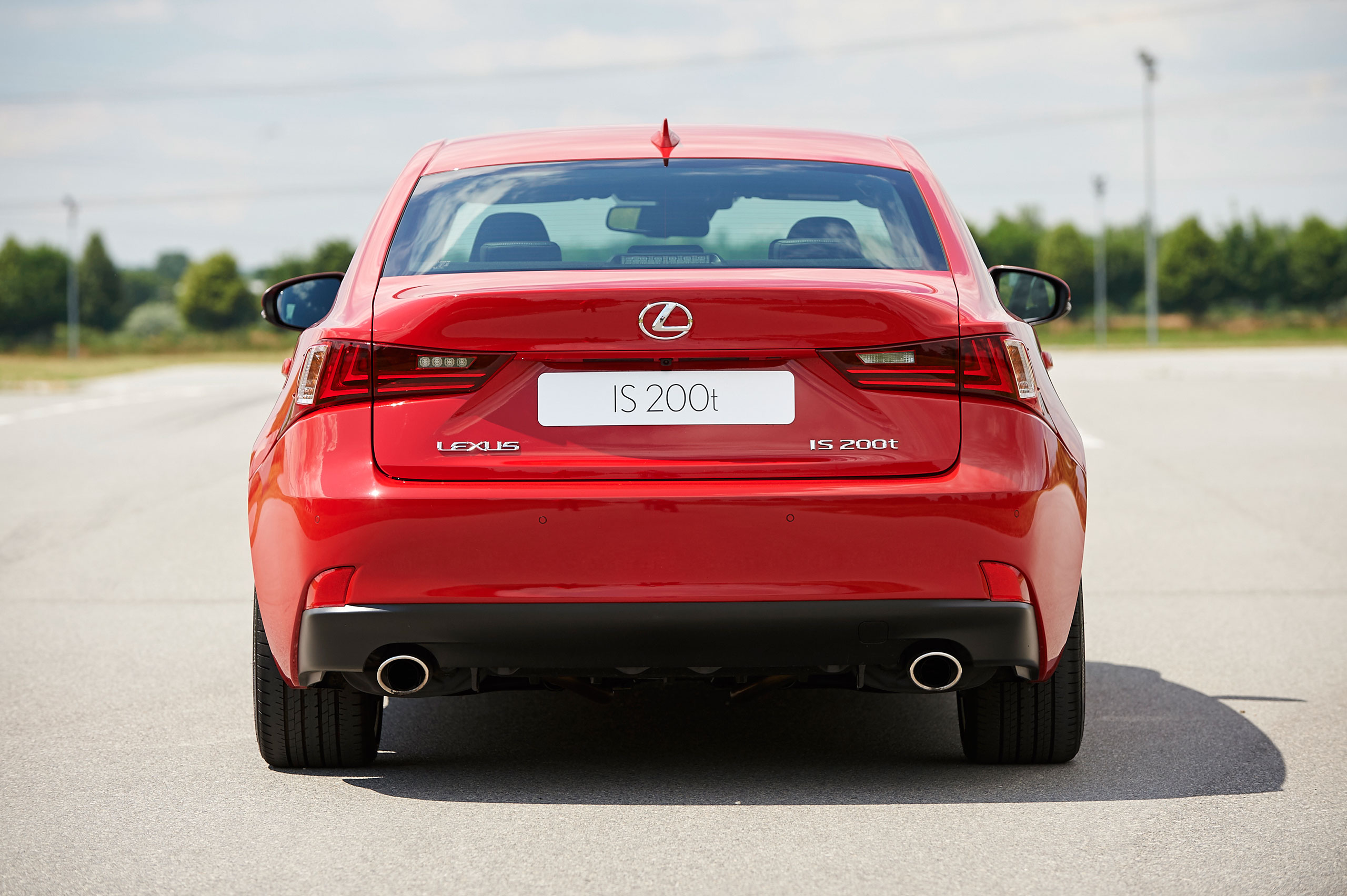





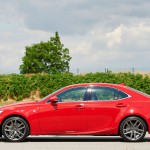
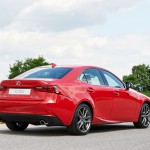
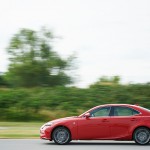
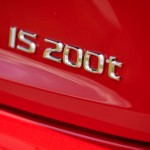

241hp…
Jorge Lopez Roman Ramirez
4cylinders at 241hp pretty legit
241 bhp from a turbo’d V8?! I get that from my 4 cylinder lol
Yes I was thinking the same my tacoma has that after a K&N
Yeah haha, seems very underpowered to me. Tuning capabilities would be good though! Haha
The title is misleading ,it has a turbocharged 4 cylinder and it’s transmission is the same as the RFC which has a v8
Oooooh, would have helped if i read the article thanks for clearing that up!